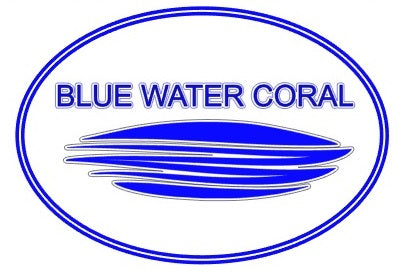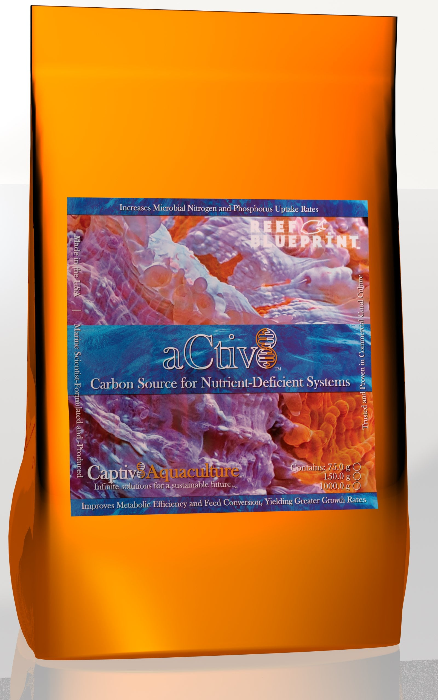A dry blend of organic carbon sources, generally applied to nutrient-deficient systems, which collectively increases the metabolic efficiency and feed conversion of corals and their allies to yield greater growth rates, as well as increases the rate of microbially-driven nitrogen and phosphorus uptake. May be employed with Inocul8 to expedite the nitrogen cycling of newly-established recirculating systems. 1 g per 100 – 150 gal. weekly, or per 700 – 1,000 gal. daily.
A dry blend of organic carbon sources, generally applied to nutrient-deficient systems, which collectively increases the metabolic efficiency and feed conversion of corals and their allies to yield greater growth rates, as well as increases the rate of microbially-driven nitrogen and phosphorus uptake. May be employed with Inocul8 to expedite the nitrogen cycling of newly-established recirculating systems. 1 g per 100 – 150 gal. weekly, or per 700 – 1,000 gal. daily.
Characteristics
- A dry blend of organic carbon sources, generally applied to nutrient-deficient systems, which collectively increase the metabolic efficiency and feed conversion of corals and their allies to yield greater growth rates, as well as greater rates of microbially-driven nitrogen and phosphorus uptake.
- May be employed with Inocul8 to expedite the nitrogen cycling of newly-established recirculating systems.
- Formula follows the Captiv8 Aquaculture policy of excluding fillers, preservatives, and artificial colors.
Basic Application
- 1 g per 100 – 150 gallons (378.5 – 567.8 L) per week, or 1 g per 700 – 1,000 gallons (2,649.5 – 3,785 L) per day.
- To expedite nitrogen cycle (in conjunction with Inocul8), 1 g / 50 gallons (189.3 L) daily until NH3 and NO2 are undetectable
Application
Keep out of reach of children and unauthorized persons. Avoid contact with skin, eyes, and mucous membranes. Store in a cool, dry location away from sunlight.
aCtiv8 is a dry, free-flowing formula consisting of organic carbon sources specifically selected for enhancing metabolic rates of microorganisms and improving feed conversion of cohort members. Improved feed conversion is associated with improved cohort robustness and decreased costs of operation. In systems with inadequate organic carbon availability, reduction of nitrogen and phosphorus may proceed to a threshold below which no further reduction occurs; application of aCtiv8 can permit further reduction of these nutrients to occur.
Maximum effectiveness is achieved within 60 months of manufacture date. This formulation does not incorporate preservatives, however refrigeration is not required. Unused contents of container should be protected from exposure to atmospheric moisture and other contaminants.
To expedite nitrogen cycle during system inoculation, apply in conjunction with Inocul8 at the rate of 1 g per 50 gallons (189.3 L) daily, until the ammonia and nitrite concentrations are undetectable.
For general application, apply at the rate of 1 g / 100 – 150 gallons (378.5 – 567.8 L) weekly, or 1 g / 700 – 1,000 gallons (2,649.5 – 3,785 L) daily. Monitor system nutrient balance. Adjust dosage accordingly.
Recommended is to mix the required mass of aCtiv8 to be dosed within 24 h with purified (not system) water (the volume of water used need only be enough to form a fluid solution; the precise volume is not important) in a clean vessel, and dispense the resulting solution into an out-current water flow within the main body of the recirculating system. Avoid dispensing the solution in close proximity to skimmer intake ports. If the suspension is to be kept ≥24 h, then refrigerate. Do not mix with system water.
Depletion of available carbon, nitrogen, and phosphorus will negatively impact the growth of cohorts consisting in part or entirety of phototrophs; this includes plants, algae, zooxanthellate cnidarians, and poriferans hosting symbiotic zoochlorellae. Monitor nutrient concentrations and note apparent related impacts on cohort appearance and biomass. Adjust nutrient content in system as necessary to maintain desired cohort appearance and growth rates.


